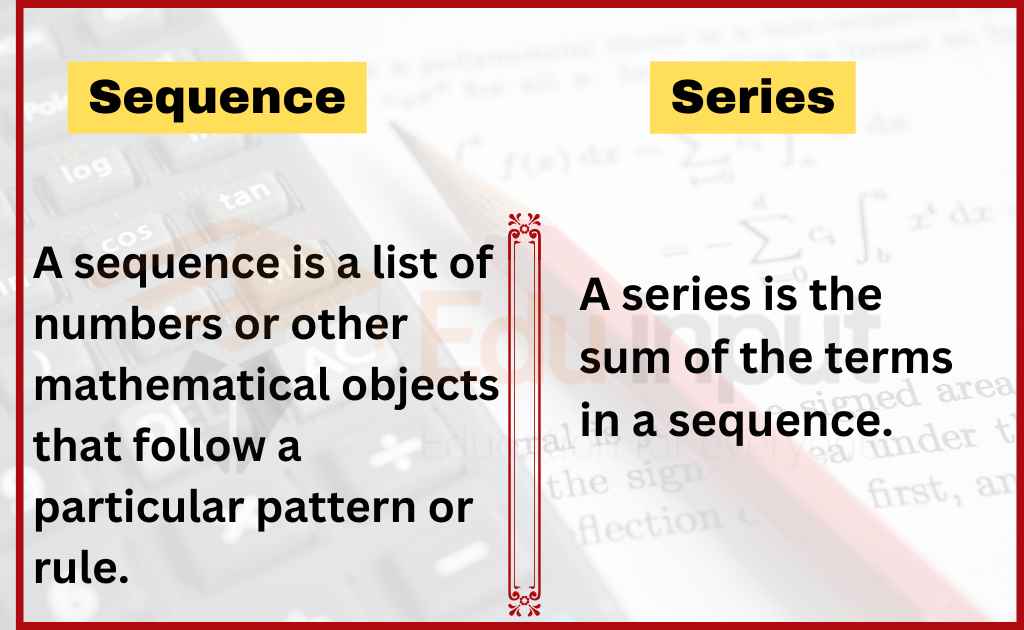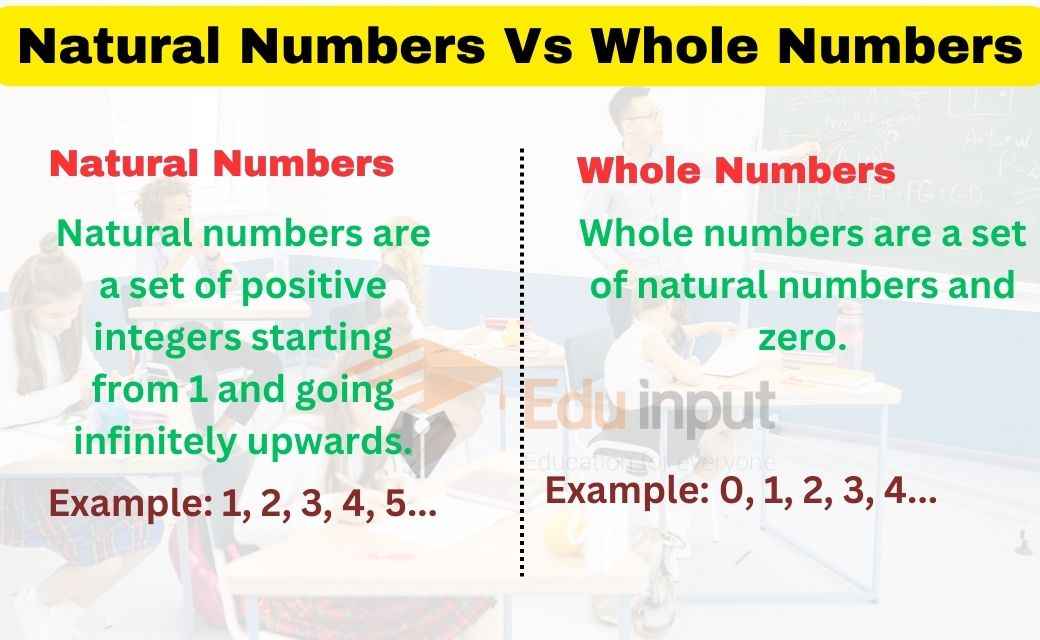Difference Between Sequence and Series
The key difference between sequence and series, Sequences are lists of numbers or other mathematical objects that follow a particular pattern or rule. And series is the sum of the terms in a sequence.

In this article we will discuss the difference between sequence and series along with separate discussion on both of them.
Sequence
A sequence is a list of numbers or other mathematical objects that follow a particular pattern or rule. Each object in the list is called a term.
Example
- The sequence of even numbers (2, 4, 6, 8, 10, …) is a list of numbers that follow the rule “add 2 to the previous term to get the next term.”
- The sequence of even numbers (2, 4, 6, 8, …) follows the rule that each term is 2 more than the previous term.
Series
A series is the sum of the terms in a sequence.
Example
- The series 2 + 4 + 6 + 8 + … is the sum of the terms in the even number sequence.
- The series 2 + 4 + 6 + 8 + … is the sum of the terms in the even number sequence.
Sequence vs Series
The differences between sequence and series are given below:
| Sequence | Series |
|---|---|
| It pertains to the arrangement of terms in a specific order. | Sum of the terms in a sequence |
| Ordering of elements is significant | Order of elements is not important |
| Follows a specific pattern or rule | Represents the sum of those terms |
| Example: 1, 2, 4, 8, 16, … | Example: 1 + 2 + 4 + 8 + 16 + … |
| Can be finite or infinite | Can be finite or infinite |
| Represented by an ellipsis or a formula | Represented by a mathematical expression using summation notation, such as Σn=1∞an |
| They do not have any mathematical symbols associated with them | They are represented using the plus (+) symbol to indicate the summation of the terms. |







Leave a Reply